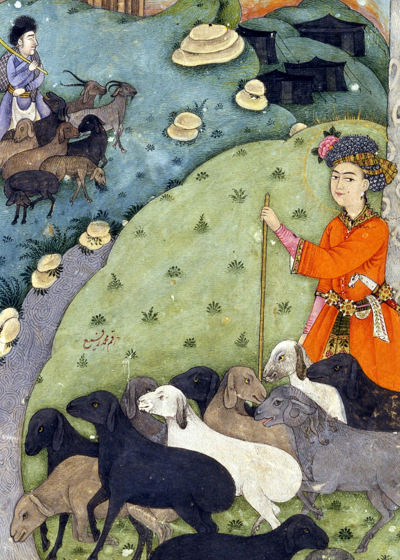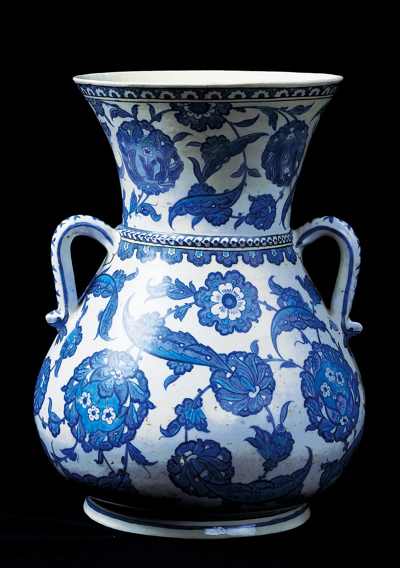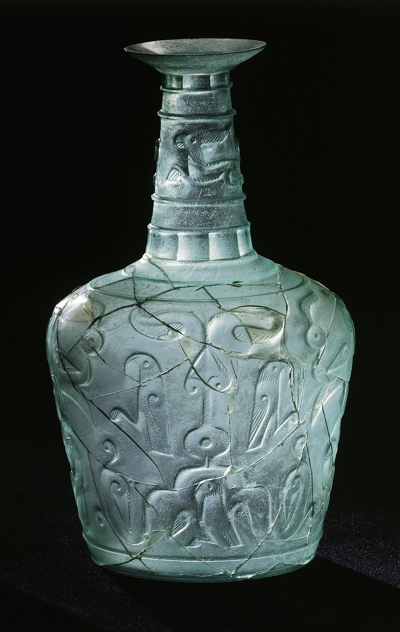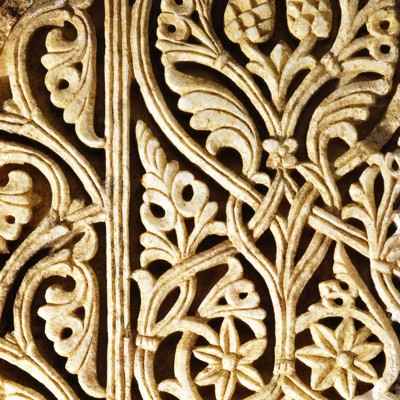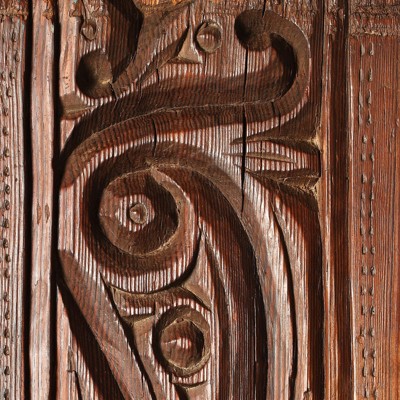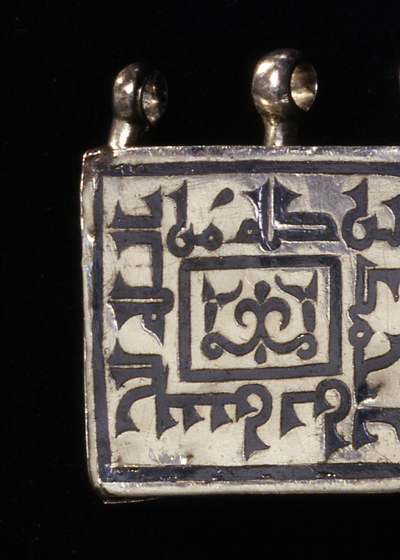Calligraphy
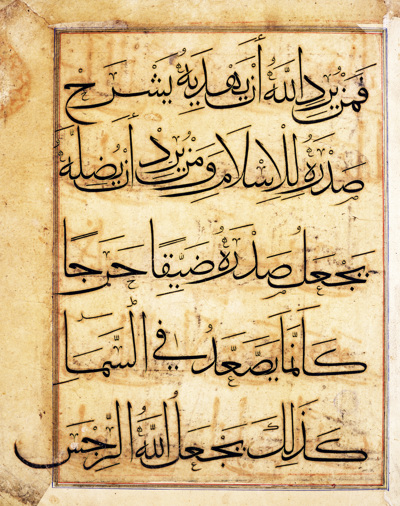
The Arabic script
The Arabic script began to develop in earnest when the religion of Islam emerged in the 7th century, and the most prestigious task of Muslim calligraphers was to convey the exalted words of the Koran as beautifully as possible.
The oldest script types – Ma’il or Hijazi, Kufi, Eastern Kufi, and Maghribi – were fairly angular. More cursive forms that were easier to write evolved at the same time and were used mostly for secular purposes. At around the beginning of the 10th century, rules were formulated for how the cursive scripts – Naskh, Thuluth, Muhaqqaq, Rayhani, Tawqi, and Riqa – were to be written. This reform enhanced the status of cursive scripts, which gradually supplanted the more angular scripts, even for use in Korans.
The Persian script Nastaliq developed in around 1500 and was used especially for poetry. Divani was the script of the chancelleries, and regional styles were also found – Bihari in India and Sini in China.
